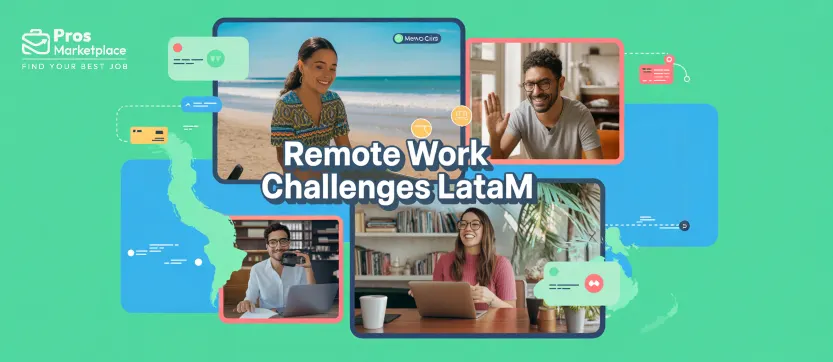With the growing digitization, the importance of managing and verifying online content cannot be overstated. Since businesses rely heavily on digital platforms to reach and engage customers, the quality and authenticity of content have a direct impact on reputation and customer trust. AI content detection tools have therefore become essential for businesses, offering advanced capabilities to analyze, verify, and moderate digital information. So let us discover how AI can help businesses effectively manage and safeguard their online content to maintain credibility and meet audience expectations.
What is AI Content?
The rise of AI has brought in a new era in content creation, with algorithms and machine learning models making content possible. They help in the creation of text, images, and other media compared to the work of a human creator.Font Style Generator further enhances AI-generated content by allowing users to customize text styles, making their creations more visually appealing and engaging. This AI-driven content represents a fundamental shift in the way information and creative work are created and presented. By using huge amounts of data, from newspapers to social media, these artificial intelligence have developed the ability to create new and effective content alongside human-created elements.
This new technology has applications that range from the creation of everyday products such as media, fiction, and even computer code. AI content creators not only create original content from scratch but can also be used to modify and enhance existing content, providing new ideas, models, and ideas.
Although AI tools can produce human-like results, they often lack the intuition, situational awareness, and creativity that distinguish them from human-generated content.
Why is it so Important to Analyze AI-generated content?

Content writing tools have transformed content creation, making it useful and capable. However, as AI technology advances, distinguishing between human-generated content and AI-generated content has also become essential. This change highlights the importance of a robust approach to verifying the accuracy of content. Several key considerations underscore the need to verify AI-generated content:
- Accuracy and reliability: Artificially created content may contain errors, outdated information, or information that is not supported by facts.
- Originality and plagiarism issues: Originality and plagiarism issues AI models often extract content from existing content which can result in texts that reflect previous work and you can also analyze the text by using a plagiarism checker to ensure it remains completely original and publication ready.
- Lack of emotional depth: While AI can create text links, it lacks the depth of thought and understanding of human-generated content.
- Potential misinformation: Intelligence’s ability to produce reliable documentation raises concerns about the spread of misinformation.
- Build trust and ensure authenticity: The distinction between human-generated content and AI-generated content is important to maintain trust and transparency in digital communications.
An efficient verification process can solve these issues, reducing the risks associated with AI-powered content creation and ensuring the integrity and trust of online information.
How to Detect AI-Generated Content?

As AI tools for content creation are evolving, distinguishing between human-generated and AI-generated content has become a critical skill. While the tools provide valuable insights, analyzing technical and syntactical aspects is also helpful. Here are some key factors to consider:
Transitional Words
Transitional words are those connectors that guide readers through sentences and paragraphs—and are a favorite of AI language models. Words like “furthermore,” “additionally,” “moreover,” “consequently,” and “hence” denote AI-generated content. However, in natural human writing, these transitions occur less frequently unless the context demands formality or professionalism. So, keep an eye out for an excess of these linguistic signs.
Vocabulary: Big Words vs. Simplicity
AI often flaunts an impressive lexicon, sprinkling its prose with grandiose terms like “utilized,” “implemented,” “leveraged,” “elucidated,” and “ascertained.” But pause for a moment: How often do everyday conversations feature such elaborate vocabulary? Not often. Human writers go for simpler, relatable terms like “used,” “explained,” and “found.” So, when assessing content, consider whether the language feels more like a thesaurus parade or a genuine human exchange.
Tone and Style
AI’s tell sign is its inconsistent tone and style. While it has made remarkable strides, it still struggles to mimic the variability found in human writing. Why?. When humans write, our thoughts meander, our emotions shift, and our tone adapts. AI, on the other hand, creates content based on patterns from their training data, resulting in a more uniform, sometimes robotic output. Take ChatGPT, for instance—it lacks human expression.
Accuracy
Inaccuracy in content is a red flag. AI tools are trained on data up to a certain date. So they might falter when queried about current events beyond that date. While recent updates provide context, always fact-check. Remember, even with helpful disclaimers, inaccuracies can slip through.
Lack of Personal Touch
Human writers infuse their work with personal opinions, emotions, and slang. AI, however, remains matter-of-fact, devoid of subjective flair. If you encounter content that lacks a personal touch, it might be machine-generated.To overcome this limitation, creators can use a humanizer tool, which refines AI-generated text to make it sound more natural, relatable, and human-like.
Repetitive Language
Keyword stuffing—a hallmark of AI-generated content—results from prompts that include specific terms. These words echo throughout the text, creating a repetitive cadence. Humans, in contrast, vary their language. So, if you spot a keyword cluster, AI might be the unseen composer.
Remember, detecting AI-generated content requires a keen eye and a blend of intuition and analysis. As you navigate the digital landscape, use these signs as your guide for authentic, human-crafted content.
AI Detection Tools

Here’s a deeper dive into some prominent AI detection tools, exploring their functionalities and potential benefits, without relying on artificial intelligence for the analysis:
1. Copyleaks: A Leader in Accuracy and Comprehensiveness
Copyleaks has an impressive 99% accuracy rate. It goes beyond checking the well-known AI-generated text and provides multiple layers. This makes it useful for researchers, writers, and content creators.
Key Highlights:
- Supports multiple file formats, including Word documents and PDFs.
- Provides a detailed report highlighting matched content and sources.
- Offers integration with learning management systems and content creation tools.
Pricing: Copyleaks offers a subscription-based pricing model starting from $10 per month, with pricing tailored for educational institutions and businesses.
2. GPT Zero: Beyond Detection, Lies In-depth Analysis
GPT Zero delves deeper, providing valuable insights into a text’s writing style, fluency, and potential grammatical errors. This multifaceted approach offers a more comprehensive content evaluation, allowing users to assess not just the origin but also the overall quality of their writing. However, users should be aware that GPT Zero’s accuracy might be lower compared to tools solely focused on AI detection. This trade-off between in-depth analysis and pinpoint accuracy is a factor to consider when choosing the right tool for your needs.
Key features
- Conversational Knowledge Access: Engages in dialogue to deliver information.
- Multilingual Proficiency: Offers comprehension and response across languages.
- Creative Text Production: Assists in generating various creative text formats.
- Informative Synthesis: Integrates knowledge from diverse sources for clear responses.
- Continuous Learning: Iteratively refines its abilities through user interaction and data exposure.
Pricing: GPT Zero does not have a public pricing model. However, users often go for the paid version if they want to check more words in a single check.
3. Originality.ai: Tailored Detection for User Customization
Originality.ai stands out for its user-centric approach. It provides a tiered system with various statistical models catering to different risk tolerance levels. Users can choose the level of services based on their specific needs. This creates a balance between speed and comprehensiveness. For instance, if you’re quickly screening a large batch of content, a basic model might suffice. However, for high-quality content like academic papers, a more advanced model would be optimal. It’s important to note that the free tier of Originality.ai might have limited functionalities. Upgrading to a paid plan unlocks the full range of features and higher analysis quotas.
Key Highlights:
- Operates independently of previous data models.
- Emphasizes originality and creativity in text generation.
- Supports diverse content, from creative writing to technical documentation.
Pricing: Originality.ai charges $0.01 per 100-word scan for plagiarism/AI content (or $0.001 per word), with optional monthly subscriptions for credit bundles and additional features.
4. Scribbr AI: Making Content Detection Accessible and User-Friendly
Scribbr AI makes content detection accessible to a wider audience by offering both free and premium versions. This user-friendly approach allows anyone to experiment with content detection and assess its potential benefits. Its interface is known for its simplicity, making it a great choice for beginners or those who value a smooth and streamlined experience.
Key Highlights:
- Specializes in academic writing integrity and quality assurance.
- Offers grammar and style suggestions tailored for scholarly articles.
- Integrates with reference management tools for seamless workflow.
- Provides feedback on the structure, clarity, and coherence of academic texts.
Pricing: Scribbr AI offers subscription plans starting at $20 per month, with options for enhanced features and institutional licenses available upon request.
Conclusion
The emergence of intelligence-driven content creation has become an essential part of creating and publishing knowledge online. As these technologies continue to evolve, questions about their uniqueness and impact on industries ranging from education to digital marketing become more important.
AI tools can analyze text, images, and other media to ensure accuracy. Tools such as Copyleaks, GPT Zero, Originality.ai, and Scribbr AI provide valuable assistance in this regard, providing content creators and educators with varying levels of expertise and usability.Additionally, platforms like Immersity AI, which can transform flat, 2-dimensional images and videos into 3D-like immersive media content, expand the scope of media analysis and presentation by adding a layer of visual depth that enhances content engagement and comprehension.
By using these tools effectively, users can deal with the complexity of AI-generated content while ensuring the accuracy and reliability of their work. Relevant and useful content that resonates with the target audience is still important in this process. Using AI as a support rather than a backup tool can lead to new collaborations across disciplines and increased creative output.







